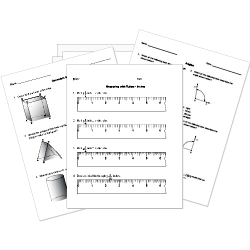Energy Stored in Force Fields
Energy Stored in Force Fields
This lesson aligns with NGSS PS3.C
Introduction
A force field is a region in space where a particle experiences a force due to the presence of other objects or charges. These force fields include gravitational fields, electric fields, and magnetic fields. Each type of field is capable of storing energy, and this stored energy can be transferred, transformed, or used to do work on objects within the field. This article explores the concept of energy stored in different types of force fields, providing examples and discussing the underlying principles that govern energy storage in these fields.
Energy in Gravitational Fields
Gravitational fields govern the motion of objects on Earth and the orbits of celestial bodies in space. The energy stored in a gravitational field is known as gravitational potential energy. This energy depends on an object’s position within the field, particularly its height relative to a reference point, usually the surface of the Earth.
The gravitational potential energy (PE) of an object is given by the formula:
PE=mgh
Gravitational potential energy is stored in the system and can be converted into kinetic energy when the object falls. For example, when a ball is held at a height, it possesses potential energy due to its position in the Earth's gravitational field. Once the ball is released, this stored energy is converted into kinetic energy as the ball accelerates toward the ground.
Example: Hydro Power Plants
A practical example of energy storage in a gravitational field is a hydroelectric power plant. Water stored in a reservoir at a higher elevation has gravitational potential energy. When the water is released, it flows downward, converting its potential energy into kinetic energy. This kinetic energy is then used to drive turbines, which generate electricity. Thus, the gravitational potential energy of the water is harnessed to produce electrical energy.
Energy in Electric Fields
Electric fields store energy due to the presence of electric charges. When two charges are positioned within an electric field, they experience forces that can either pull them together or push them apart, depending on their polarity (positive or negative). The energy stored in the electric field depends on the configuration of these charges and their separation.
The energy stored in the electric field between two charges is called electric potential energy. For two point charges q1 and q2 separated by a distance r, the electric potential energy is given by:

In addition to point charges, energy can be stored in an electric field through devices such as capacitors. A capacitor is a device that stores electrical energy by maintaining a separation of charges on two conductive plates, with an electric field between them. The energy stored in a capacitor is given by the formula:

Example: Capacitors in Circuits
A capacitor in an electronic circuit stores energy in its electric field and can release that energy when needed. For instance, in a camera flash, a capacitor stores energy from a battery. When the flash is triggered, the stored energy is rapidly released, providing the burst of light. This ability to store and release energy makes capacitors essential in many electronic devices.
Energy in Magnetic Fields
Magnetic fields, like electric fields, also store energy. The energy stored in a magnetic field arises from the motion of electric charges, such as those in a current-carrying wire or in a loop of wire (forming a solenoid or coil). When current flows through a wire, a magnetic field is generated around it, and energy is stored in this field.
The energy stored in a magnetic field can be calculated for a solenoid or an inductor (a device that stores energy in its magnetic field) using the following formula:

Magnetic fields play a key role in various technologies, including transformers, electric motors, and generators. Energy is stored in the magnetic fields of these devices and can be transferred to perform useful work.
Example: Inductors and Electric Motors
In an electric motor, energy stored in the magnetic field created by a current-carrying coil is used to produce motion. As the magnetic field interacts with other magnetic fields in the motor, it exerts forces that cause the rotor to spin, converting electrical energy into mechanical energy. This principle is used in countless devices, from household appliances to industrial machinery.
In addition, inductors, which store energy in their magnetic fields, are used in power supplies and electronic circuits to regulate current and store energy temporarily.
Conclusion
- A force field is a region in space where a particle experiences a force due to the presence of other objects or charges.
- Gravitational potential energy is stored in the system and can be converted into kinetic energy when the object falls.
- The energy stored in a magnetic field arises from the motion of electric charges, such as those in a current-carrying wire or in a loop of wire.
- Electric fields store energy due to the presence of electric charges.
Related Worksheets:













